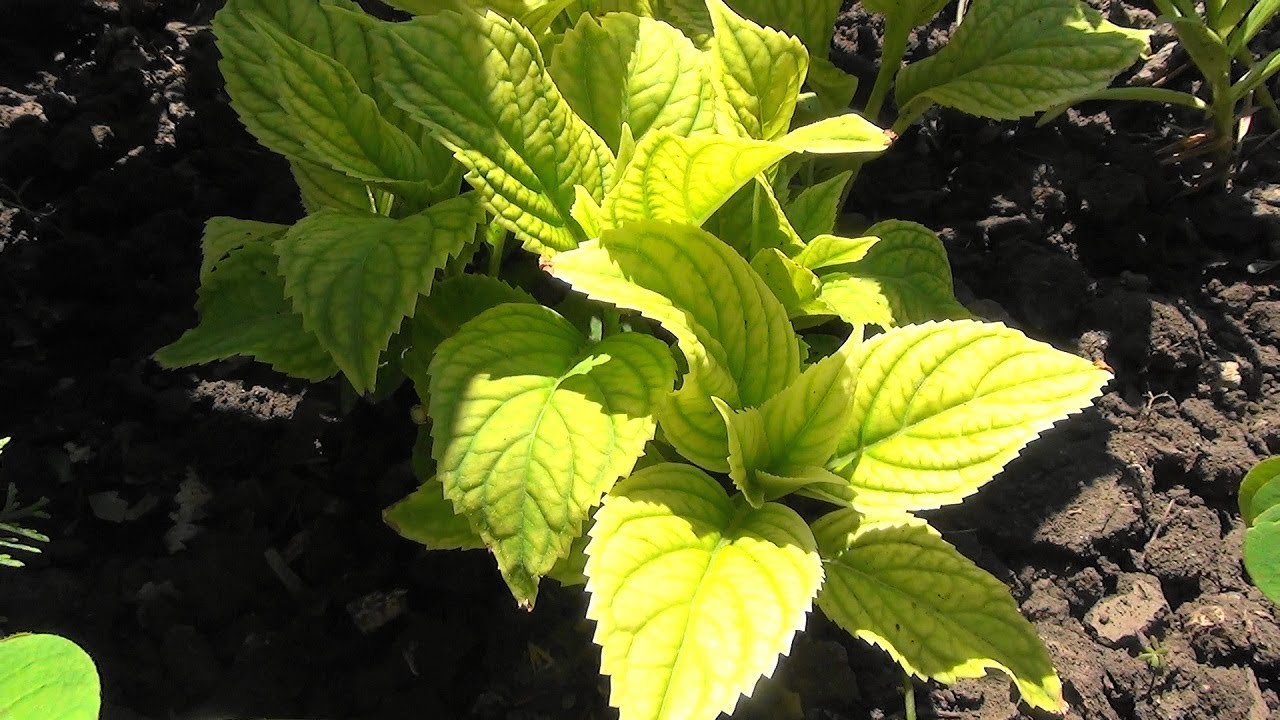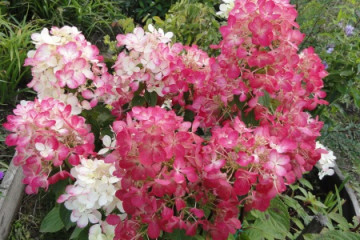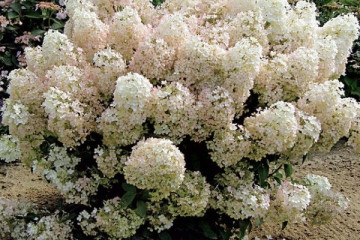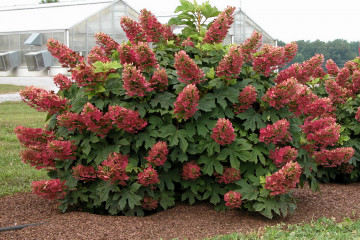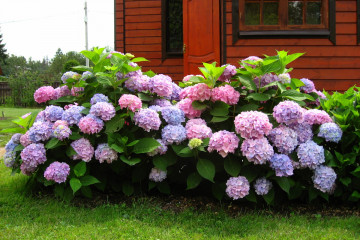Chlorosis of hydrangea paniculata or large-leaved - how to treat leaves
Content:
Hydrangea chlorosis is the most common disease that occurs in this plant. The causes of the disease are very diverse. The flower is unpretentious to care for, however, adverse weather conditions can contribute to metabolic disorders. Hydrangea has strong immunity and practically does not get sick. Every grower wants to enjoy the beautiful lush flowers of a large-leaved shrub. Sometimes there are small problems on the way to bloom.
Symptoms
Hydrangea leaf chlorosis occurs for a variety of reasons. The disease manifests itself in the form of drying of the leaves, their yellowing. This is due to metabolic disorders, a lack of iron is formed. External manifestations have certain characteristics:
- curling foliage around the edges;
- the formation of brown spots;
- drying out of shoots;
- death of a flower;
- deformation of plant organs;
- drying of the top;
- shedding of leaves and buds.
If the above signs are observed, then before starting the treatment of hydrangea chlorosis, it is necessary to establish the cause of its occurrence.
Causes of leaf blanching and chlorosis
Chlorosis occurs for various reasons. This is due to unfavorable weather or improper care. The disease interferes with the normal development and flowering of the flower. The main factors of occurrence are:
- too cold soil;
- improper watering, excess moisture;
- long rains;
- the air temperature has been below 18 ° С for a long time;
- alkaline or neutral soil;
- burn from the scorching sun;
- lack of sunlight;
- high room humidity;
- lack of nutrients in the soil;
- poor drainage layer.
How to treat chlorosis in hydrangea leaves
Chlorosis of hydrangea leaves its treatment is very simple. Since it arises from a lack of iron, the plant is fed with this trace element. In the advanced stage, more effort will have to be made. However, it is possible to fully restore the health of the flower.
Rusty nails from chlorosis
At the moment, many gardeners and flower growers use rusty nails to replenish the iron in the soil. A small amount of material is buried next to the roots of the hydrangea. It was noticed that this not only makes up for the deficiency, but also works as a preventive measure for chlorosis. The method is suitable for both a garden bush and an indoor flower. In the garden, a small number of nails are buried under the root. If you need to carry out the procedure in a pot, then this is done with the help of a transplant: they lay the material at the bottom of the pot.
Chlorosis treatment with iron preparations
Iron for hydrangea is of great importance. It participates in the processes of photosynthesis and plant nutrition. If there is a lack of it, the flower begins to wither. Paniculata hydrangea is especially susceptible to the disease. It is a garden type of culture and is often found in gardens and landscaping. Iron preparations are used to treat chlorosis.The most effective and popular are:
- Mikom-Reakom;
- Micro-Fe;
- Antichlorosis;
- Ferrilene;
- Brexil-Fe;
- Ferovit;
- Agikol.
The drug is quite simple to use. It is bred according to the instructions, then the plant is sprayed. It is advisable to distribute the mixture evenly so that it hits all the shoots. If the effect is not observed, then the hydrangea is poured with liquid under the root. These drugs will help completely cure the flower. During use, precautions must be taken.
Chlorosis prevention
To prevent the occurrence of chlorosis, it is recommended to follow preventive measures. To do this, they monitor the health of the plant and follow the rules of agricultural technology. You can prevent chlorosis by following a few simple rules:
- the plant is planted in partial shade, if the flower grows in a pot, then provide diffused lighting;
- monitor the acidity of the soil, it should always have a value of 5-5.5;
- observe the watering regime, there should be enough moisture, but without excess;
- feed the hydrangea strictly on schedule;
- put into a state of rest for the winter period;
- a drainage layer is laid in the pot and on the site;
- before flowering, iron sulfate and its analogues are used to prevent chlorosis.
Which plants are most susceptible to chlorosis
Chlorosis is not limited to hydrangeas. Other plants are also susceptible to it. They need to be treated in the same way. This is due to the fact that all cultures have the same processes of photosynthesis. They all need iron. It can be replenished by any possible method. Most often, chlorosis affects:
- hydrangeas;
- rhododendron;
- grapes;
- roses;
- raspberries;
- tomatoes;
- lemons;
- tangerines;
- azalea;
- gardenia;
- clerodendrum.
These plants are susceptible to chlorosis, but have a strong immunity to other diseases. All rehabilitation measures are aimed at preserving vital processes and nutrition. Do not panic, a simple treatment will quickly restore the health of your beloved flower.
How to use iron vitriol for hydrangea
Iron vitriol for hydrangeas is used as a prophylaxis for chlorosis. You can also make iron chelate from it. It is a very effective remedy for the disease, which quickly and effectively gets rid of the problem. Iron vitriol for hydrangeas is used in the garden and at home. It is an organic compound that will not harm the plant.
Iron chelate is a mixture of ferrous sulfate and acid. The drug can be purchased in specialized stores or made by yourself. Gardeners and florists often use several popular recipes:
- 5 g of citric acid is diluted in chilled boiled water. Then add 5 g of ferrous sulfate to the solution. The resulting mixture is sprayed or irrigated.
- 1 tbsp. l. ferrous sulfate is diluted in 1 liter of boiled cool water. Add 2 tbsp. iron sulfate. The solution is mixed well, used for the treatment and prevention of chlorosis.
The self-prepared mixture remains effective when dissolved for 2 weeks. At the end of the term, a new iron chelate is prepared.
Iron vitriol is used to prevent chlorosis in hydrangeas. It does not cure disease, but protects the plant. The powder is added to the root area or sprinkled on branches and leaves. Prepare from it solutions for spraying and processing.
Hydrangea is a beautiful flower that surprises with its beauty. It is often planted to decorate the garden. Small bushes take root well on the windowsills of color lovers. The plant is susceptible to the development of chlorosis. This disease disrupts the flowering and general appearance of the flower.To prevent this from happening, it is recommended to carefully monitor the hydrangea, follow the rules of agricultural technology and prevention.
Video
